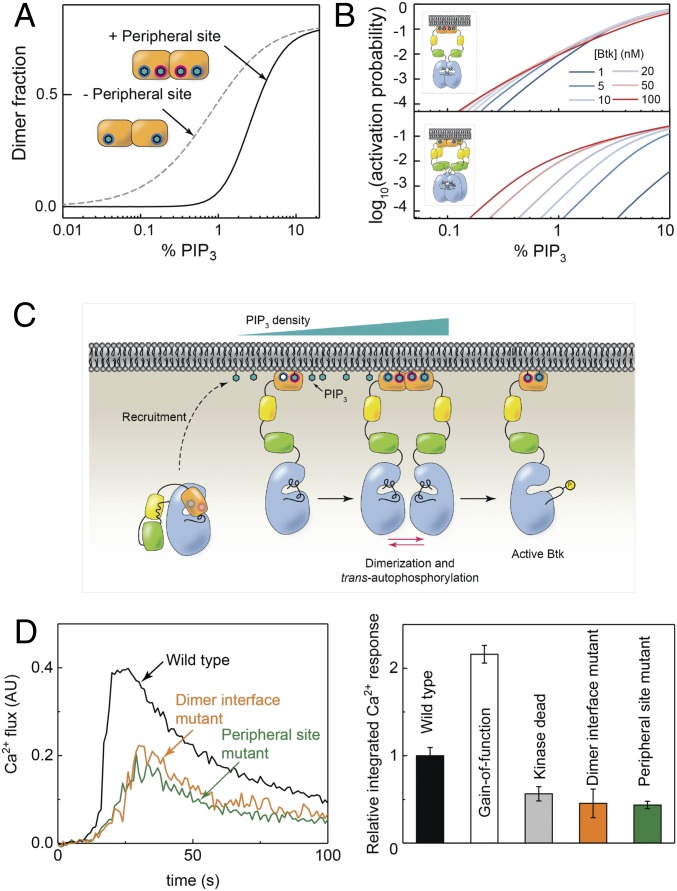Fig. 5.
Fourth-order substrate detection by Btk. (A) Using the kinetic rate constants derived from the sequential kinetic model, the dimer fraction was calculated for the hypothetical case in which the PH-TH module may dimerize with only one PIP3 (second order) and for the actual case where two are required (fourth order). (B) An alternative method to achieve fourth-order PIP3 detection, single lipid binding followed by tetramerization to activation (Lower), was considered and compared with the observed mechanism (Upper). (C) The proposed activation mechanism for Btk. (D) Calcium flux for Btk-deficient chicken B cells transfected with variants of Btk and activated with BCR antibody (Left) and relative integrated calcium response for WT, gain-of-function (E41K), kinase dead (D521N), dimer interface mutant, and peripheral site mutant (Right).

